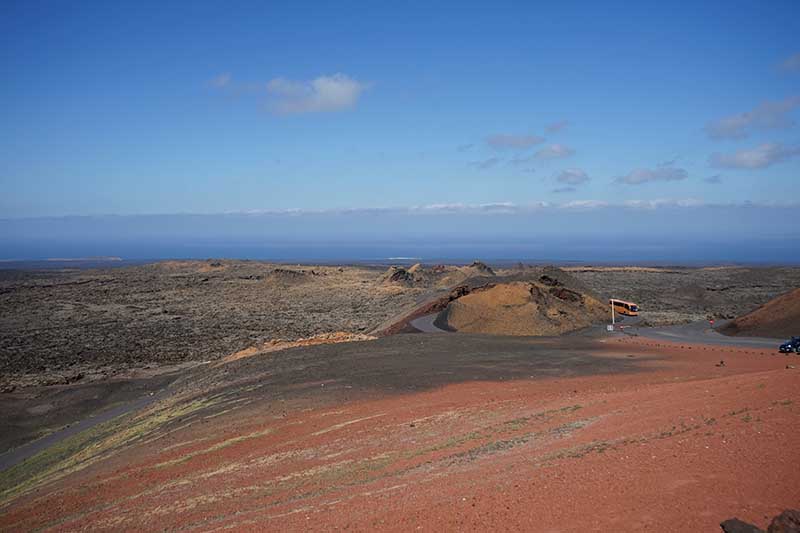The visitor is deeply impressed by the rustic nature as well as by the recorded explanations he will hear along the tour, of the priest of Yaiza who lived an eruption that affected great part of the south of the island. After the tour amongst craters it is absolutely necessary to visit the mirador restaurant “El diablo” where the visitor can taste some of the delicious specialities of the island cooked with the heat that comes from the bowels of the earth, and the crafts shop, both placed on a small hill known as Hilario Islet. The architectural complex of Mountains of Fire is another of the space works of César Manrique, who the same as he did with the “Mirador del Río” (The Mirador of the River) converted the building into another element of the landscape, when he covered it with volcanic rock and glass. The dining room, of circular plant, offers wonderful views of the lunar landscape of Lanzarote, whose spirit of still life was introduced right to the centre of the restaurant by César, when he put a dry fig tree next to a dromedary skeleton both protected by a glass window. The park contains a great diversity of phenomenons in relation with its volcanic origin and surprisingly a great biological variety with 180 species of vegetation, fighting to survive in a land apparently infertile. People arriving to or leaving the park from Yaiza will find the “echadero de camellos” and the possibility of making a short tour riding a dromedary on the south side of Timanfaya to experiment the sensation of being riding on an animal that was widely used on the island until 50 years ago.




